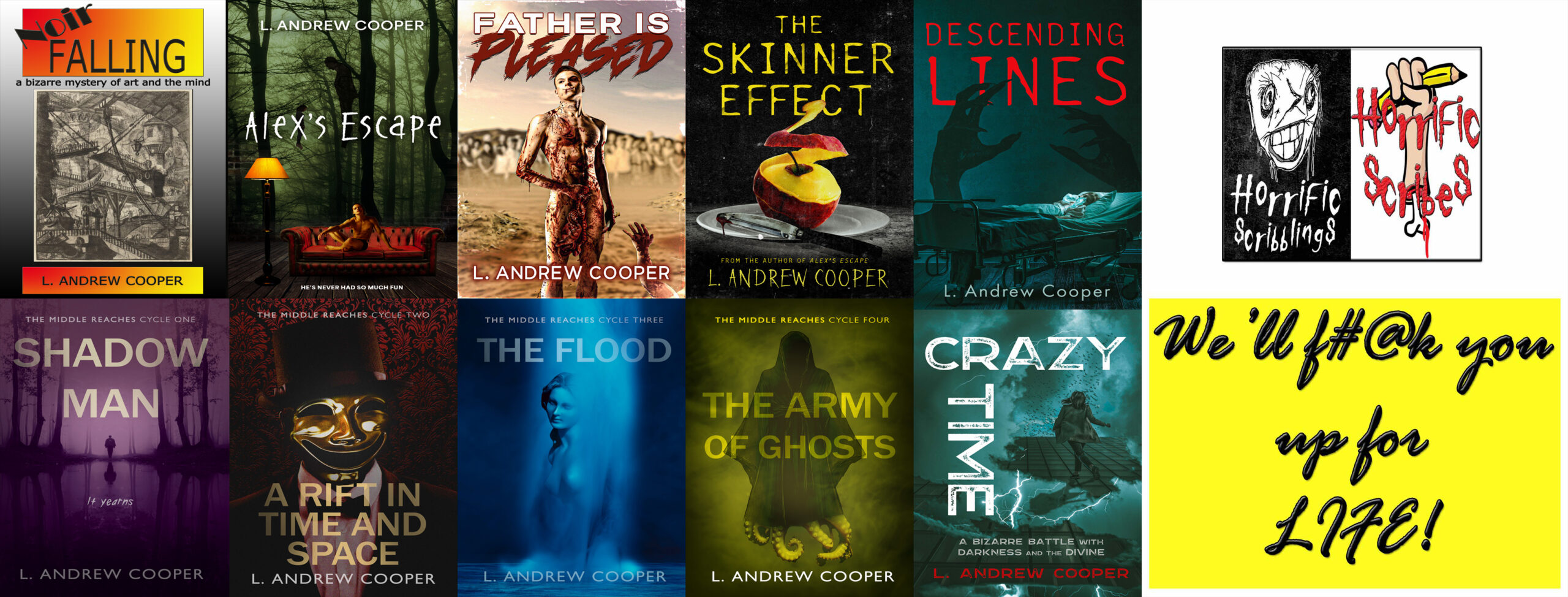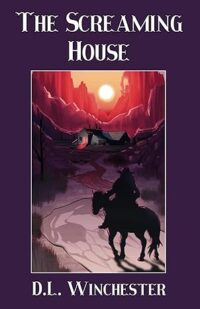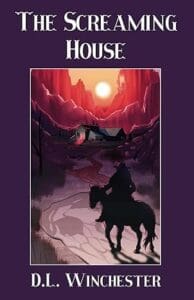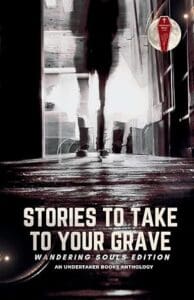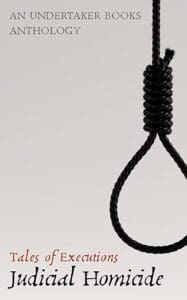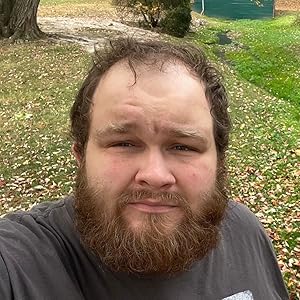D.L. Winchester brings a wealth of knowledge and experience to his western horror novella The Screaming House, a page turner with depths he throws light on in this interview.
The Screaming House
Getting under Judge Ray Spencer’s skin doesn’t get you sent to prison—he’ll drag you to the Screaming House.
Bounty hunting duo Aggie and her father, Roche, track their latest prey—two bank-robbing outlaws—in the unfamiliar town of Briar Hill. But when Roche guns down the outlaws at the local saloon, their brother turns out to be the town’s judge, Ray Spencer. Roche is sentenced to hang, but Aggie steps up and aids him in his escape—playing right into Spencer’s hands. Spencer captures Roche and hauls him to his isolated logging camp, dubbed “The Screaming House,” to avenge his brothers’ deaths.
Can Aggie rescue Roche from the bloodthirsty Judge Spencer? Or will the Screaming House swallow them both?
Follow them to their fate in D.L. Winchester’s grisly western horror novella, THE SCREAMING HOUSE.
The Interview
1. How Far West Is Horror? It doesn’t have strange creatures or supernatural elements, so what makes The Screaming House both western and horror? What dimensions make the story not just set-in-the-late-1800s-American-West but western and likewise not just bloody and violent but horror? To the latter point, I’ll give away that torture is involved, torture that does get grisly. Do you think it’s torture porn? Why or why not? For Ray Spencer, watching torture provokes a porn-like sexual response. Does his response to horrific violence reflect on displaying or enjoying it in art (such as writing and reading it in your book)? Is this response part of being “horror?” Why or why not?
DLW: I don’t accept the idea that for something to be “horror” it has to have strange creatures or supernatural elements. Some of my favorite horror writers, Jack Ketchum, Mort Castle, and Steve Gerlach, rely on human evil to create horrors that are, in my opinion, worse than creatures/the paranormal. This isn’t to say I don’t ever write horror that contains creatures/the paranormal. In fact, in the sequel to The Screaming House, the villains fall into both categories (Devil’s Fork is scheduled for a July 18, 2025 release from Undertaker Books). But I don’t think those elements have to be there for horror to exist.
The Screaming House was written to have strong notes of extreme horror and splatterpunk without fully submerging the reader in those genres. I decided to write it after reading a “Splatter Western” and thinking, “I can do this better.” Both those genres definitely have elements of torture porn, and I think Ray Spencer’s character and actions help lend credence to the “horror” side of horror western.
At the same time, I like your question about what makes the story “not-just-set-in-the-late-1800s-American-West,” because I think that is a defining motif of the western genre. To me, it seems to be as much about the setting as it is the tropes that define it. Frontier life was difficult and brought many unique struggles, both real and exaggerated. I think showing those struggles and the response to them is as much “western” as two men staring each other down at high noon.
I didn’t explore Spencer’s sexual needs as much as I could have in The Screaming House, but I’d like to think his needs grew over time rather than all at once, and there was a point where depictions of horror in art and writing would have been enough for him. But at the same time, living on the frontier, getting his hands on the kind of art needed to satisfy those needs would have been a challenge in itself.
2. Gun Gore. While The Screaming House offers a variety of imaginative ways for the human body to get smashed, punctured, slashed, dismembered, etc., the mainstay of violence is gunfire that ends in gory descriptions of chests ripped open and heads blown apart. Why the attention to bullets’ physical impact, which is usually quick and over in far less time than necessary to read your descriptions? Do you intend a kind of slow-motion effect with these descriptions? How do you expect readers to respond to representations of what bullets actually do to bodies, something sanitized in the traditional western? Does the extremity of the violence reflect on the western’s tendency to glorify guns? Why or why not?
DLW: I spent almost a decade working as a mortician, and as part of my training, we dissected cadavers. I’ve seen the inside of human bodies, both in the cadaver lab and when embalming people who have been autopsied/donated tissue and organs, and one of the things that I came away with is a fascination with how brilliantly designed the human body is, and how one little object, like a bullet, can be enough to bring its functions to a screaming halt.
I’ve also always loved shows and information about how things work and what makes them tick. So, by slowing down and actually looking at what happens when a bullet plows into someone, I’m kind of performing an autopsy for the reader, showing them not just the gunfire, but what happens after the bullet strikes. Which does slow things down a little and isn’t something commonly seen in westerns. But I think one of the great things about writing is that it’s always evolving, and if a genre hasn’t evolved to include something you’d like to see, you can introduce it in your work.
While what bullets actually do is somewhat sanitized in westerns, they are also given an almost mythical level of striking power. One hit, and the target goes flying over the saloon! (I’m exaggerating here, but only slightly). “Western” gore isn’t always realistic, and as someone who likes things to be as realistic as I can, getting to show the actual damage is a way of doing that while maintaining the inherent gore of horror and the gunplay of a traditional western.
As far as westerns “glorifying” guns… I think in a good western, a gun is a tool, an extension of the man carrying it. When you move the focus away from the character to focus on the gun in his hand, it’s a disservice to the character. A character who kills will kill no matter what weapon is available to him, and in westerns, guns just happen to be one of the more convenient ways to kill.
3. Assault on Masculinity. Speaking of traditional westerns, they usually feature rugged male heroes who model masculinity and generally beat the bad guys against the odds. Your novella offers two male protagonists, Tidwell and Roche, neither of whom fits the John Wayne archetype. On the first page, Tidwell is in tears, and we learn that his balls have been crushed. Why begin with an image of not only a man crushed but manhood specifically crushed? Do you think your book is, on some level, about the failure of the masculinity offered by the traditional western? Roche seems poised to do no better than Tidwell, and as the description above indicates, he needs rescuing from his daughter not once but twice, something unthinkable to the manly man of old. Does his reliance on his daughter diminish him? Why or why not?
DLW: I will say Tidwell was never intended to be a protagonist—his portions were added after the first draft was finished. I wanted to bring a somewhat neutral perspective to the story and add some length, so as I thought about whose perspective would be the most beneficial, I found myself wondering what the story would look like to the guy on the cross, so Tidwell’s character was expanded.
As far as the first page, I wanted something brutal, pretty much the worst thing you could do to someone without actually killing them that would have both a physical and psychological impact. As a man myself, the thought of the castrati from religious history has always sent a chill down my spine, so applying a similar idea to Tidwell got the effect I wanted.
“Failure of masculinity” might be reading more into my work than I ever did! I don’t tend to think about the message my work will have while I’m writing it. I’m mainly thinking about characters and what they can do that makes me interested in their story. But when The Screaming House was released a week before the 2024 Election, I definitely noted some parallels between my book and the main contenders in the election. Was it a happy accident? Yes, but it was the kind of accident that made it look like I had ulterior motives.
Roche needs rescuing from his daughter more than once or twice. In fact, part of their backstory (which I can’t remember if I mention in The Screaming House or a future Aggie adventure) is that when they first meet, she’s rescuing him after another pair of villains has left him for dead. The main thing I wanted to get across was that Roche sees Aggie as an equal. I don’t think that’s a failure of masculinity as much as an elevation of it, being willing to look outside the societal norms and understand something others may not be willing to and use it to his advantage.
As I wrote the story, my daughter was one year old going on thirty, but one of the things that strikes me in my own life is how often she rescues me, running to me for a hug, blowing me kisses, and making me feel like I’m the center of her world. Aggie is a lot of what I hope Wednesday will grow up to be. Aggie is his ace in the hole, a secret weapon none of the men around him would expect or respect, and it tends to play to his advantage.
4. The Woman Hero. And speaking of Roche’s daughter, Aggie—as the person stuck with doing most of the rescue activities, she mostly seems like the hero of the piece. Why make a young woman the hero of your western horror novella? How does having a woman do most of the gunslinging change how you think and write about western genre conventions? How much do you think readers relate to Aggie’s strength and resourcefulness? Aggie and the other female character who receives the most attention, Millie, are both sex workers or, in the parlance of the novel and times, whores. Why? Is this role problematic, empowering, or both?
DLW: Because though I enjoy a good damsel in distress, while I was writing The Screaming House, I realized a story focusing on Roche trying to save Aggie would be, at best, lost in a sea of similar stories. Also, Spencer has no idea Aggie exists, so it was fun to build her up as a secret weapon while Spencer focuses on Roche. It was a decision that could have gone either way, but in the end, I decided to make Aggie the rescuer and see what happened.
I think readers will relate to Aggie as an underdog at first, but as they get to know her, there will be a growing sense of, “Oh shit, Spencer bit off more than he could chew.” Which I think relates more to the horror side of the story, where the main character often has to grow into their role before the ultimate victory. It is western horror, after all, merging elements from both genres, and bringing Aggie in as a hero is a nod to the horror side of tradition, as well as another horror trope that would give away too much of the story to mention here.
One of the Facebook reels I’ve been watching lately is from a creator called “Modern Working Girl,” a legal sex worker in Nevada. She talks a lot about the industry, what the job entails, and how she deals with clients, and one of the most striking things about her is that she seems to have her shit together, on a level I saw in the best NICU nurses when my son was in intensive care. That makes me think the job can be empowering, if a person chooses to make it empowering, as Aggie does. It was a case where I needed Aggie in the saloon, in a role where she wouldn’t be noticed, and that was the position that worked best for the story. But as the story goes on, we see how she is able to use that position to her benefit.
I honestly hate to say that I don’t know as much about Millie as I do Aggie. I didn’t develop her as deeply as a character because I didn’t need to: I needed a way for Spencer to hurt Tidwell on a psychological and emotional level, and a woman fit the bill. It would be interesting, at some point, to go back and write the story of Millie and Tidwell, just to get to know her better and see how their relationship developed. But until then, I don’t have a lot of answers about her.
5. Really Bad Bad Guys. Your main villains, Judge Ray Spencer and his sidekick the Doctor, are totally sicko sadists. I don’t think they’d flinch at that label. In fact, at one point the Doctor embraces it with glee. As I’ve mentioned, Spencer’s sadism is in part sexual—he literally gets off on torture. What else drives his lust to inflict pain? What drives the Doctor’s? Does either of these characters have any redeeming qualities? Why or why not?
DLW: At the time, the Doctor was the most fucked-up character I’d ever written. Since then, I’ve finished other drafts and have created more characters who are even more fucked up that you’ll see in the future. I think there’s an interesting dynamic between the Doctor and Spencer in that they need each other: the Doctor needs Spencer for protection, and Spencer needs the Doctor for sexual satisfaction. But as far as what actually drives them, I think the Doctor has a similar psychopathy to modern serial killers like John Wayne Gacy: he tortures and kills because he can, and he won’t stop until he’s stopped.
Spencer is more nuanced, I think. The question the Doctor asks Roche tells us a lot about Spencer: “If you were in his situation, would you make the same choices?” It’s a difficult question to answer for me personally, and I hope it is for the reader, and I hope it gives them at least a moment of reflection.
As far as redeeming qualities, I don’t see the Doctor having any, but I think there are definitely two sides of Spencer, the side on public display when he’s in town and serving as a judge, and the side we see at the Screaming House. Even if the Screaming House is an open secret in town, I think Spencer would strive to be seen as a prominent, upstanding citizen when he is not at the Screaming House. That would be part of how he keeps his support system in place, and how he keeps the people around him loyal to him.
6. Kind of Bad Good Guys. Do good and evil exist in the world of The Screaming House? Looking at Spencer, I might believe in evil, but good is tougher. Tidwell gets in trouble with Spencer because he’s a thief, and Roche and Aggie are bounty hunters who kill people for a living, so our candidates for “good guys” aren’t… great. Why no knights in shining white armor? Does Tidwell care about being “good?” Does Roche? Why or why not? When things get bad, both men fantasize about doing the same sadistic things to the bad guys as the bad guys do to others. If their sadistic acts are what make the bad guys so bad, are the… other… guys just as bad, at least potentially? Why or why not?
Perfect heroes are boring.
D.L. Winchester
DLW: Perfect heroes are boring. I’ll start by saying that.
Aggie and Roche are not upright John Wayne types. If anything, they’re Clint Eastwood in The Outlaw Josey Wales or Christoph Waltz and Jamie Foxx in Django Unchained, doing what they must to get by. If that means bringing a man in dead, it’s what they’re going to do. As I mentioned earlier, frontier life was hard, even if some of the challenges are exaggerated in modern times. Sometimes, the priority has to be survival before character.
Tidwell is a more interesting case because I think his desire to escape Spencer was driven from a desire to be good, or at least better. He didn’t want to be associated with what Spencer was doing at the Screaming House, and he saw his chance to escape, even though it involved theft, something that is bad. Do good men sometimes have to do bad things to make things better? Is stealing from a bad man as bad as, say, stealing from Mister Rogers? Those are the kind of questions that Tidwell brings to readers.
As far as Tidwell and Roche wanting to retaliate against the Doctor and Spencer, I don’t know that I would say their response makes them just as bad. A human response to the kind of pain they were put through is “an eye for an eye,” and though it may make the whole world blind, there is a certain satisfaction in retaliation. I think Tidwell and Roche have a human desire to retaliate for what has been done to them, and I think being left in a cell to stew about what’s been done to them would have an effect on them and make them more prone to vengeance in kind.
7. Perspective. Your relatively short novella breaks into 54 brief chapters, with each chapter break shifting from the perspective of one character to another, telling the story from Tidwell, Roche, and Aggie’s points of view. Why did you choose this approach? How does it shape the way we understand the story overall? What do the limitations of their perspectives cost the characters, and how do the limitations help add to readers’ involvement in the story’s development? What sort of character arcs, or developments in these perspectives, should readers expect?
DLW: So initially, the book was broken into more traditional chapters, alternating between Aggie’s perspective and Roche’s perspective. But when I added Tidwell, it created an imbalance: there wasn’t a good way in the traditional chapter format to make sure the reader knew which perspective they were seeing at that point. So, Rebecca (our EIC at Undertaker Books) suggested using short chapters, and I thought that was the best solution.
I think the varied perspectives give the reader a better overall view of the story, especially having added Tidwell’s perspective. To me, that was the most important addition to the story in the editing process.
I’m not sure that the short chapters limit the reader’s perspective as much as they enhance it. I like the way the short chapters give a better “real time” view for the reader without forcing them to see certain events through a single character’s eyes. I think it’s a way to keep the reader more involved with the details of the story as a whole.
It’s definitely a case where I think this style of storytelling is most beneficial for this story, but my next Aggie book, Devil’s Fork, will have a more traditional chapter structure because it’s what works best for that story.
8. Shadows of an Uncivil War. Although it’s a natural topic for the time period, the U.S. Civil War comes up often enough in The Screaming House to seem noteworthy. What is its significance to the characters and the story? Do you think memories of the war’s atrocities contribute to the casualness with which characters inflict and receive violence? A little more grandiose—did the Civil War desensitize America? Why or why not? Villains in your novella seem to have fought for the Confederacy, but I’m not sure about the other guys… does whose side a character fought on matter in your world? Why or why not?
DLW: So I’m a big Civil War buff, and it creeping into my work is natural. The Civil War also plays a big role in Roche’s back story, which we’ll get into more in the fourth Aggie adventure, tentatively titled Ojinaga. I think the Civil War and its immediate aftermath was the perfect kind of chaotic environment for someone like the Doctor to operate without being brought to justice.
Did the Civil War desensitize America? Wow. That is a grandiose question, and one I want to roll the previous question into. I can’t imagine seeing violence on the scale a soldier in the Civil War would have seen and not being desensitized. As previously stated, I was a mortician for nine years, and one of the defenses you develop against the job is a certain level of disconnection to the impact of death. Actually being the one inflicting death and witnessing the outcome of those battles, I can’t help but think a greater sense of disconnection would be necessary to survive, and that it could certainly endure long enough after the war to affect these characters. As far as America as a whole? I definitely think it’s possible.
Getting back into the Civil War history side of things, I’m from East Tennessee, which was one of the most pro-union areas in the south. I’ve got ancestors who fought on both sides, but I’m not a lost cause apologist. I think there is complexity and nuance to the history, but, big picture, the Confederacy was in the wrong and deserved to lose the war.
But it’s hard to argue historical nuance in the space of a novella (Michael and Jeff Shaara do a brilliant job of this in their Civil War novelizations, and they also use multiple perspectives on a larger scale), so I do kind of rely on the “Confederacy is bad” narrative to establish my villains as evil. Roche was a Yankee, and there is back story to be revealed in Ojinaga that will explain just how much of an effect the Civil War had on both his and Aggie’s lives.
9. Unchecked Power. As your book’s summary indicates, Ray Spencer is a judge, and corrupt government allows him to get away with his crimes. This kind of corruption isn’t uncommon in the western—do you think it was widespread in the times of your novella? Do you think the kind of unchecked power that Spencer represents is common today? Why or why not? At one point, Spencer says, “‘justice for those who understand civilization is its own form of insanity.’” What does that mean? Is he right? Why or why not?
DLW: I think that in Westerns, you need a villain, and corruption is an easy way to create a villain. As far as it being a historical fact, I’m undecided. I’d like to think that those with the independent spirit of the west wouldn’t have tolerated it, but at the same time, humans will be human, and corruption is definitely human.
As far as unchecked power being common today, that’s another grandiose question. Here in America, I think there is a leader that aspires to that kind of unchecked power, and it remains to be seen if he will be successful in attaining it. As Lord Acton said, “Power tends to corrupt, and absolute power corrupts absolutely.” The struggle for power will always exist, and with it will come a desire to remove the guardrails on that power.
The context of that statement, “Justice for those who understand civilization is its own form of insanity,” is important. Spencer was referring to a punishment being carried out outside the law, and he was implying that following the law in that case would not lead to justice actually being served. It gets back to the idea of unchecked power and an idea that justice should be what the person with power wants it to be, not necessarily what society thinks it should be. As far as if Spencer is right or not, I’d say your answer will depend on whether or not you’re the one with unchecked power.
10. Access! How can readers learn more about you and your works (please provide any links you want to share)?
DLW: I am on Facebook and BlueSky at the links below, and I also write regularly on the Undertaker Books blog. I’ve got three books published to date, and several more in various stages of being prepared for publication. Eventually, I will put together a website to put everything in a central location, but until then, Facebook is your best bet!
Facebook: www.facebook.com/writerdlwinchester
Bluesky: https://bsky.app/profile/dlwinchesterwriter.bsky.social
Undertaker Blog: www.undertakerbooks.com/blog
About the Author
D.L. Winchester lives in the foothills of southern Appalachia. A former mortician, his work searches the darkness to find tales worth telling. He is the author of over three hundred obituaries, numerous short stories, the novella The Screaming House, and the collections Shadows of Appalachia and A Terrible Place and Other Flashes of Darkness.
D.L. also serves as the President and Associate Editor of Undertaker Books, an independent horror publisher. In his spare time, he can be found searching for inspiration in the world around him and helping his wife try to keep their children from becoming the next generation of horror villains.
